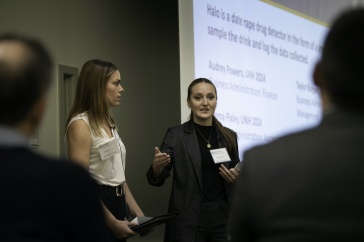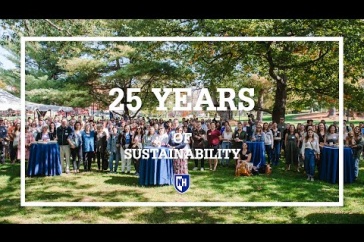
Alicia Walsh ’15 did not need to learn the Oshiwambo dialects—the most widely spoken languages of Namibia—before heading to Africa this summer to study big cats at the Cheetah Conservation Fund. But the biomedical science major and aspiring veterinarian did need to become proficient with the tools of her trade—namely, a 310 genetic analyzer, Geneious software, enzymatic purification, Big Dye Terminator chemistry and the Qiagen stool extraction kit, among other equipment and processes— which she used to analyze the scat samples of African carnivores, in search of clues about what they eat.
If that all sounds a bit too high-tech, perhaps some of the other tools Walsh used will resonate: a washing machine and a toaster oven.

“I put the scat samples into a nylon stocking and then ran them through a regular cycle on the washing machine—no detergent, just cold water,” she says. “The process breaks down the scat and leaves behind its various contents, like bone fragments and hair fibers. It’s a really effective way of getting down to the scat’s contents.”
The Franklin, Mass., native’s research project on the feeding habits of the black-backed jackal, mongoose, hyena, leopard and cheetah was more than curiosity; knowing more about these African carnivores’ diets could help save the endangered cheetah. There are only 10,000 of the cats left in Africa and Asia, and conflicts with farmers continue to be a cause of their decline. CCF’s education staff will take the findings of Walsh’s analysis to farmers to raise awareness and, hopefully, reduce the number of cheetah kills.
Preheat oven to 108?
When her initial scat analysis revealed bones, Walsh used a microscope and the naked eye to identify the prey species by their skeletal fragments. But when the initial analysis revealed hair fibers, Walsh used another common appliance to identify the prey animal. First, she would make an imprint of the hair follicle by placing it on a plastic cover slide secured between two glass slides, which she would then “cook” in a 108-degree toaster oven for four to five minutes. “This causes the cover slide to melt over the hair and mold around the hair cuticle,” Walsh explains. After it cooled, she removed the hair from the cover slide using forceps and compared the resulting imprint to samples in order to determine which species the hair belonged to.
The process revealed some enlightening results that will give CCF educators solid footing in their efforts to defend the cheetah. Find out what Walsh discovered in this video about her African experience.
?
?
Alicia Walsh conducted her research using a grant from the International Research Opportunities Program ?of the UNH Hamel Center for Undergraduate Research.
?
-
Written By:
Tracey Bentley | Communications and Public Affairs




















































